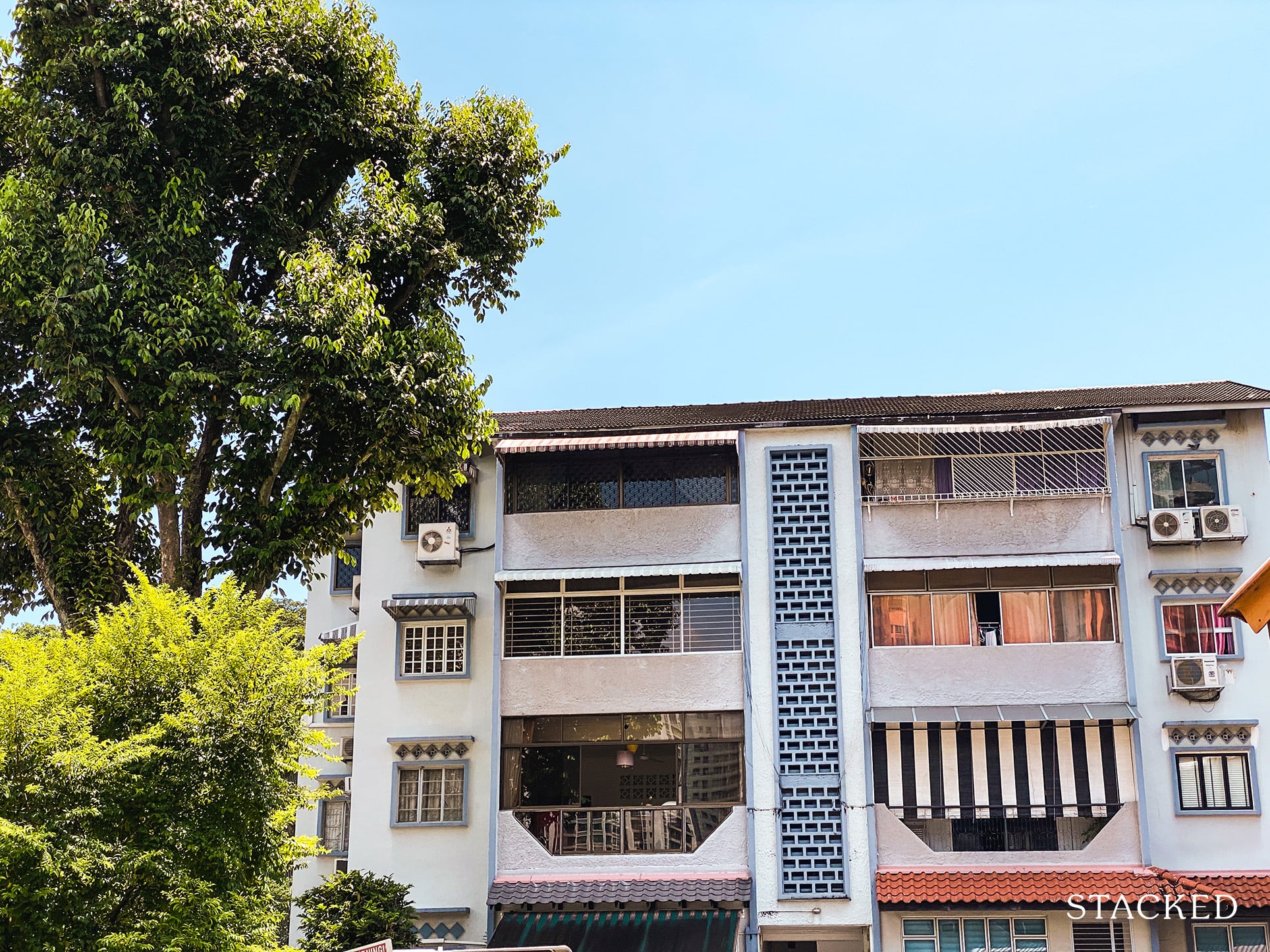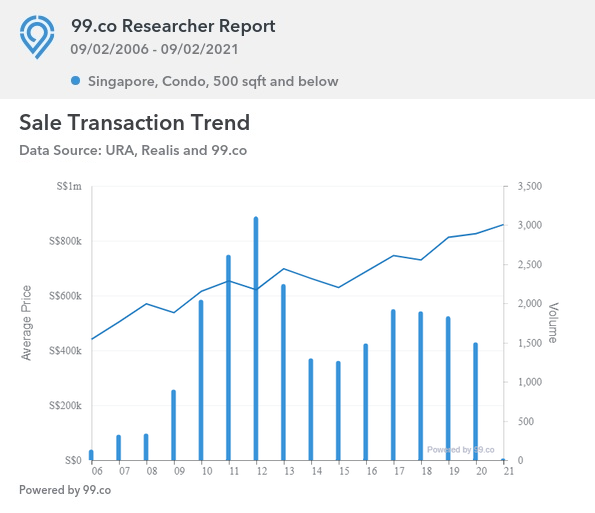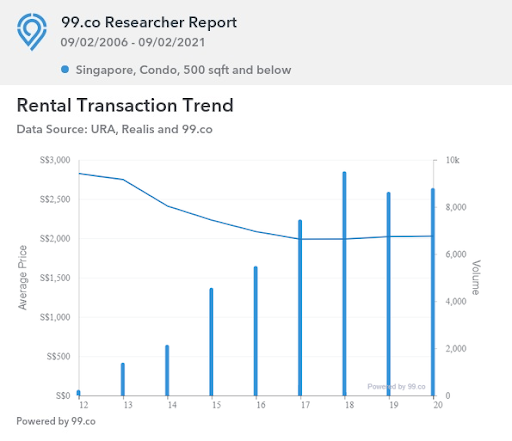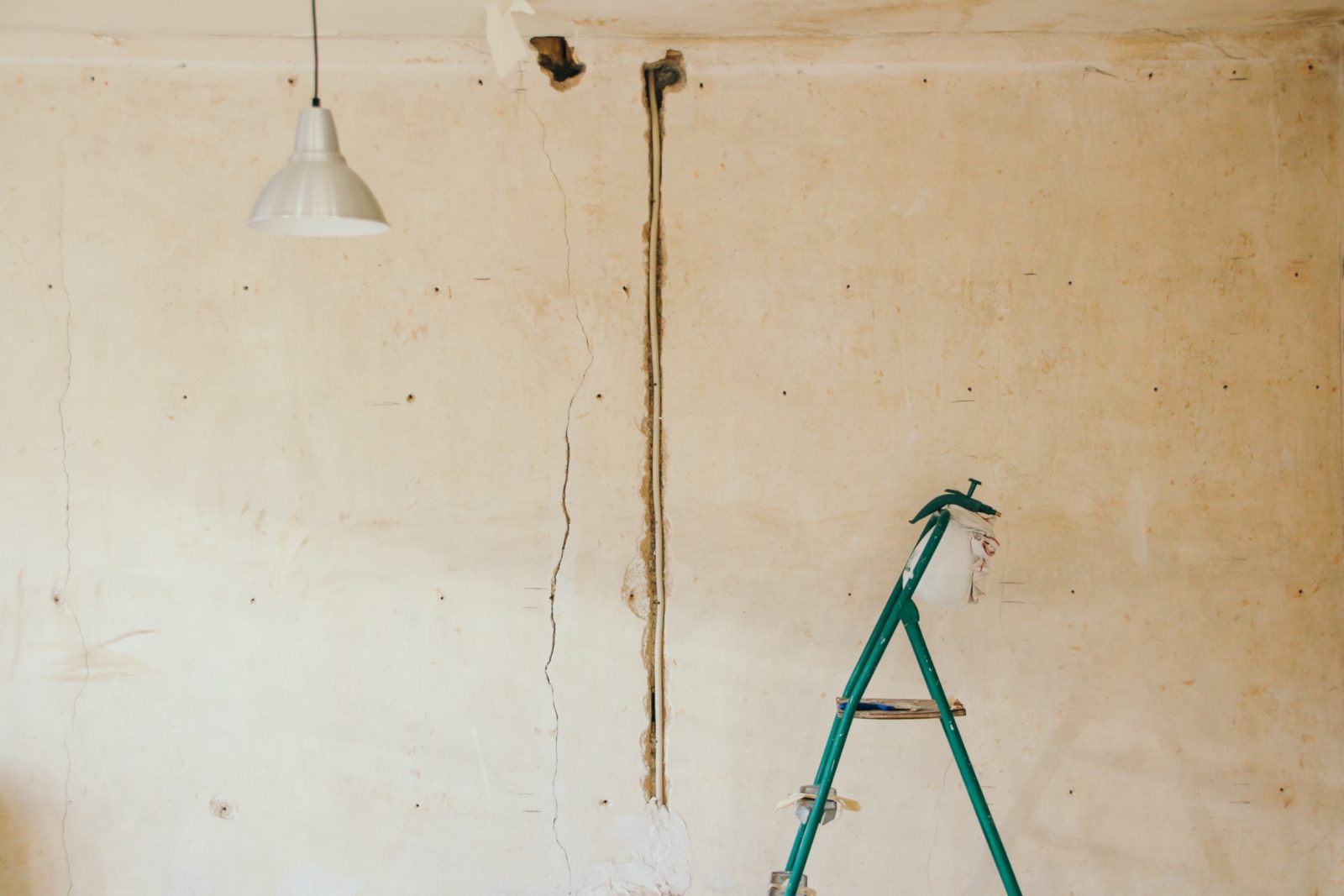First Time Landlords Take Note: Here’s How Much You Need To Save Before Buying A Rental Property

Get The Property Insights Serious Buyers Read First: Join 50,000+ readers who rely on our weekly breakdowns of Singapore’s property market.
A seasoned content strategist with over 17 years in the real estate and financial journalism sectors, Ryan has built a reputation for transforming complex industry jargon into accessible knowledge. With a track record of writing and editing for leading financial platforms and publications, Ryan's expertise has been recognised across various media outlets. His role as a former content editor for 99.co and a co-host for CNA 938's Open House programme underscores his commitment to providing valuable insights into the property market.
So your Minimum Occupation Period is finally up, and you’re ready to plunge into an investment property; or maybe you’ve got your eye on a well-located one-bedder in town. The first rental property is arguably the most important – often, its success will determine whether there’s a subsequent property investment. So long before you reach tycoon status, it’s important to ensure you start with the right fundamentals.
That means being well capitalised, so you’re not forced to accept lower rent, or a fire sale. Here’s a quick look at how much you should be prepared to set aside, before you can own and rent out your first property:
Key costs to prepare for as a landlord
The initial, non-recurring costs include:
- Down payment
- Stamp duties
- Legal fees
- Renovation & furnishing
The recurring costs are:
- Property tax
- Maintenance fees and day-to-day maintenance
- Monthly loan repayments
- Tenant acquisition costs
You should try to ensure you have three to six months of these recurring costs saved up, before starting to rent.
Finally, you should set aside cash for contingencies, in the event of:
- Replacement of appliances
- Major repairs
We will use, as our example, a 500 sq.ft. shoebox unit priced at $825,805. This is the was the average cost of a one-bedder, island-wide, as of 2020:

These units are the most common choice for first-time investors, due to the lower quantum.
Initial non-recurring costs
1. Down payment
We have a more detailed description in our guide. Just to summarise however, the maximum bank loan is 75 per cent of the property price or value, whichever is lower. We will assume the price and value are the same for our shoebox unit, which would be the case if it’s a new launch unit.
Assuming you get maximum financing, the first five per cent of the property must be paid in cash. Another 20 per cent can be paid in any combination of cash or CPF. As such, the minimum you should set aside, in the case of our shoebox, would be:
- $41,290.25 in cash
- $165,161 in a combination of cash or CPF
This is the minimum amount; however, a general rule of prudence is to have 30 per cent of the capital you need (i.e., $247,741.50 in our example). This is a loose guideline however, and you should speak to a financial advisor for information specific to your finances.
2. Stamp duties
See our complete guide for the details. For quick reference, you will need to pay the Buyers Stamp Duty (BSD), and Additional Buyers Stamp Duty (ABSD).
We assume, for this example, that the shoebox unit will count as your second property, and that you are a Singapore Citizen.
The stamp duty rate is based on the higher of the price or value. For a unit priced and valued at $825,805:
- The BSD is $19,734
- The ABSD is $99,097
This would mean a total stamp duty of $118,471.
Stamp duties can be paid with any combination of cash or CPF.
3. Legal fees
This will range from $2,500 to $3,000. Whether you can pay for this with CPF depends on the law firm in question, so do ask beforehand.
4. Renovation & furnishing
We have more in-depth details on renovation and furnishing in this earlier article.
These costs are highly variable, so we’ll assume you go for the absolute minimum that’s still presentable.
Assuming you use minimum renovations for the shoebox unit, we will assume a cost of about $36,000. We use this as a reference point because, if you need financing, this is the cap on bank renovation loans (either $30,000 or six months of your income, whichever is higher). We then add another 20 per cent on top of a $30,000 budget, to accommodate any incidental costs.
Assuming simple furnishings, a one-bedder can be reasonably decked out for around $15,000.
Note that, as an alternative, you can rent out the unit unfurnished. This is an unusual choice for a single-bedder; but some landlords do this for the first tenant, and then buy over the furnishings for cheap when the tenant leaves.
Fixed costs so far:
- Total of $378,422, of which
- $92,290.25 is in cash (includes renovation & furnishing)
- $286,132 is in any combination of cash or CPF
Recurring costs
As mentioned above, try to have three to six months of the following saved up in a property fund, before you start renting (with the exception of property tax, if you’re paying that at the end of the year). For the purposes of this example, we will go with three months’ worth of expenses.
1. Property tax
Please see our guide to property tax for the full details.
With regard to our shoebox unit, we will assume an Annual Value (AV) of $24,000. This was about the average rental rate for shoebox units across Singapore, as of 2020; and we assume the IRAS estimate will be close to this:

The tax payable would come to around $2,400. However, do remember that you can claim at least 15 per cent of the gross rental income as a tax deduction.
2. Maintenance fees and day-to-day maintenance
Maintenance fees refers to the mandatory contribution to the MCST fund, which is usually paid on a quarterly basis. We will assume you pay about $250 per month for the shoebox unit.
As such, you should set aside $750 in savings for the quarter.
Actual maintenance refers to small repairs, such as having to fix leaky faucets, or replace sagging cabinet doors. In most Tenancy Agreements (TAs), the tenant is responsible for the first $150, after which the landlord covers the rest – check your TA for the specifics; you’re supposed to agree on this amount before you sign.
Likewise, note that air-conditioner servicing may be covered by the tenant, depending on the TA.
We will assume around $300 a month for small repairs, of which the tenant covers $150. This leaves you with setting aside about $450 in your property fund (covers about 3 months just in case).
3. Monthly loan repayments
We will assume a maximum loan amount of $619,354 for our shoebox unit, at 1.3 per cent per annum for 25 years. This is a monthly loan repayment of about $2,419.25.
As such, you’ll want $7,257.75 in your property fund, to service the mortgage for at least three months if anything goes wrong.
Note that home loans can be paid through CPF, and you can set aside up to $20,000 in your CPF Ordinary Account when buying the property; you may want to set aside 3 months worth of the mortgage to be safe.
4. Tenant acquisition costs
This is what you pay to find tenants. The most obvious example would be the service fee you pay if you use a property agent; this is typically one month of the rent for a two year lease, or half a month of rent for a year’s lease. For the purposes of this example, we will assume the property agent’s commission is $2,400 for a two-year lease.
Even if you don’t use a property agent, you should set aside sufficient funds to market or list your property. The cost of this will vary depending on your method, such as property portals or newspapers.
(A word of warning: landlords have been fined for sticking their listings at bus stops, and this seems to be more vigorously enforced than it was a decade ago).
Amount you should save up before renting out the unit:
- About $750 in cash for the property fund, which should pay for maintenance over three months
- $7,257.75 in any combination of cash or CPF, to keep the mortgage paid for three months
- Around $4,800 to pay for property tax and a new tenant, at the end of the year (this will probably be less after tax deductions, if the TA is renewed without the agent’s help, etc. but it’s best to be prepared).
Cash for contingencies
1. Replacement of appliances
The most typical replacement needs here are:
- Washer & Dryer – between $800 to $1,100
- Fridge – between $450 to $515
- Microwave – between $75 to $150
- Water heater – between $100 to $150
- Television sets can cost anywhere from $500 to well over $10,000 depending on the size and quality; but we’d assume an $800 wall-mounted living room TV for a shoebox unit.
Remember your tenant is generally responsible for damages, and you can take it out of the security deposit. But you may want to be prepared with an extra $1,500 set aside, in case you need to replace anything on short notice.
(There have been unfortunate cases where the tenant disappears and breaks the lease, and leaves behind a lot of broken appliances).

2. Major repairs
These are for situations such as serious ceiling leaks, major electrical fires, etc. Most of these should fall under your home insurance; but you will be expected to fix these long before your claims pay out.
For example, if the air-conditioner or lights are down, and your tenants don’t find the unit habitable, you may be obliged to put them up in a hotel for a few nights. For this reason, we suggest setting aside $2,500 to $3,500 in cash for major repairs – at the very least a sufficient amount to compensate tenants, if they’re forced to live elsewhere for a few days.
Total you should set aside for your first rental property:
You’ll want to set aside $104,790 in cash. This will cover the down payment, renovation, furnishings, and three months of the maintenance (both the maintenance fee and actual day-to-day maintenance).
It also includes enough for major repairs and replacing appliances, should it become necessary; as well as the funds to pay the property agent’s commission and property tax.
In addition, you will want around $290,890 in your CPF. This will cover the rest of the down payment, while also ensuring you can keep the mortgage paid for three months, in the event of a vacancy.
To recap:
| Property Price | $825,805 |
| Down payment 5% Cash | $41,290 |
| Down payment 20% Cash/CPF | $165,161 |
| Total | $206,451 |
| Stamp Duty | |
| BSD | $19,374 |
| ABSD | $99,097 |
| Total Duties | $118,471 |
| Legal Fees | $2,500 |
| Renovation | $36,000 |
| Finishings | $15,000 |
| Total Fixed Costs | $378,422 |
| Recurring Costs | |
| Property Tax | $2,400 |
| Maintenance | $750 |
| Minor Repairs | $450 |
| Monthly Loan Repayments | $2,419 |
| 3 Month Reserve | $7,258 |
| Agent Commissions | $2,400 |
| Cash Contingencies | |
| Replacement of Appliances | $1,500 |
| Major Repairs | $2,500 |
| Total Cash Needed | $104,790 |
Bear in mind that these are not the actual costs, but just the funds you should have available. You can’t use the above to estimate the actual yield and gains – some of the costs, such as the interest rate on the home loan or property agent’s fees, are recoverable later (they’re tax deductible). Likewise, you’ll be able to cover the cost of major repairs or damaged appliances via the security deposit and insurance.
You just want to have funds set aside for the initial expense. This is to avoid situations where you have a broken fridge or no lights in the house for a few days, because of a cashflow issue; and with regard to the mortgage, do remember that you have to pay the bank on time, even if your tenant pays late. Although it must be said too, this is quite a conservative approach for someone that is less risk-averse.
At Stacked, we like to look beyond the headlines and surface-level numbers, and focus on how things play out in the real world.
If you’d like to discuss how this applies to your own circumstances, you can reach out for a one-to-one consultation here.
And if you simply have a question or want to share a thought, feel free to write to us at stories@stackedhomes.com — we read every message.
Ryan J. Ong
A seasoned content strategist with over 17 years in the real estate and financial journalism sectors, Ryan has built a reputation for transforming complex industry jargon into accessible knowledge. With a track record of writing and editing for leading financial platforms and publications, Ryan's expertise has been recognised across various media outlets. His role as a former content editor for 99.co and a co-host for CNA 938's Open House programme underscores his commitment to providing valuable insights into the property market.Read next from Property Advice

Property Advice We’re In Our 50s And Own An Ageing Leasehold Condo And HDB Flat: Is Keeping Both A Mistake?

Property Advice Should We Buy An Old 99-Year Leasehold Condo To Live In: Will It’s Value Fall When The Lease Runs Out?

Property Advice We Own A $800K 1-Bedder And A $1.1M 3-Bedder: Is It Possible To Upgrade To A 4-Bedder Condo?

Property Advice I Own A 55-Year-Old HDB Flat, But May Have To Sell — Can I Realistically Buy A Freehold Condo With $700K?
Latest Posts

Pro How A 625-Unit Heartland Condo Launched In 2006 Became One Of 2025’s Top Performers

Property Investment Insights Does Buying A One-Bedroom Condo Still Make Sense As An Investment In 2026

Property Market Commentary Why This Once-Ulu Town In Singapore Is Going To Change (In A Big Way)

Editor's Pick This HDB Just Crossed $1.3M For The First Time — In An Unexpected Area

Singapore Property News “I Never Thought I’d Be Sued by a Tenant.” What Long-Time Landlords in Singapore Miss

Editor's Pick I Lived In Bayshore When It Was ‘Ulu’. Here’s How Much It Has Changed

Editor's Pick HDB Resale Prices Finally Slowed in 2025 — Will It Continue in 2026?

Singapore Property News Breaking News: District 23 Condo Sells Out In Under Two Years At $2,120 Psf Average

On The Market Here Are The Cheapest 3-Bedroom Condos in Central Singapore You Can Still Buy From $1.15M

Property Market Commentary Why The Singapore Property Market Will Be Different In 2026 — And It’s Not Just About Prices

Editor's Pick 2025 Year-End Review Of The Singapore Property Market: What The Numbers Reveal

Pro This 21-Year-Old Condo Didn’t Sell Out Initially, Yet Became A Top Performer

Editor's Pick How The HDB Resale Market Performed In 2025, And What It Means For 2026 Prices

Editor's Pick 4 Key Trends Reshaping Singapore’s New Launch Condo Market In 2026

Editor's Pick What I Only Learned After My First Year Of Homeownership In Singapore


